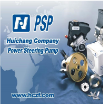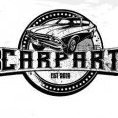-
Welcome to Auto Parts Forum
Whether you are a veteran automotive parts guru or just someone looking for some quick auto parts advice, register today and start a new topic in our forum. Registration is free and you can even sign up with social network platforms such as Facebook, X, and LinkedIn.
Selling Tie Rods and Steering Components
-
Similar Topics
-
By 1772668470
Installing a power steering pump involves several steps. It’s important to have the correct tools and follow safety precautions. Here’s a step-by-step guide to help you through the process:
Tools and Materials Needed:
New power steering pump
Power steering fluid
Wrench set
Screwdrivers
Pulley puller (if necessary)
Jack and jack stands
Drain pan
Safety glasses and gloves
Torque wrench
Steps to Install a Power Steering Pump:
-
By 1772668470
Hello every one, this is power steering pump factory in china.We have 17 years of manufacturing experience with high quality and competitive price, if you have interest ,pls feel free to contact us. call whats app:+86 18006521672 email:[email protected]
-
By CarPartAU
Are you looking for some stores to buy used or new car parts? If so, then Car Part is the place for you. Rather than sharing a limited list of stores, we at Car Part have come with the list of the best link hidden, please login to view. These sites will connect you with a large number of car part sellers across Australia. Without wasting much time, fill out the form and click send a request button. To know more, visit us today.
-
By Dorman Products
Before selling a vehicle, make sure to remove personal data from the infotainment system
-





Recommended Posts
Join the conversation
You can post now and register later. If you have an account, sign in now to post with your account.
Note: Your post will require moderator approval before it will be visible.